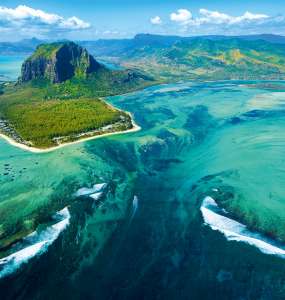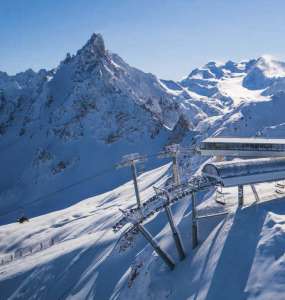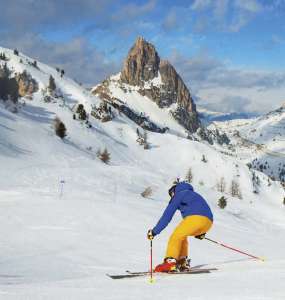The Dominican Republic: Beaches and Beyond
When you are dreaming of a holiday in the Dominican Republic, perhaps all you want is a day in a hammock on a Caribbean beach, cocktail in hand. But after a good portion of sea and sun paradise you feel energised enough to grab a surfboard or snorkelling gear, hiking boots or a binocular. And then you start to explore.
To begin with, the Dominican Republic boasts 18 national parks and 1,600 kilometres of the shoreline with a chain of 200 some beaches. Many of them are covered with white sand but there’s a handful of black sand beaches in the southwest. In the south, the country is washed by the Caribbean Sea, that’s where you have perfect swimming and snorkelling conditions. Whereas the Atlantic Ocean in the north creates opportunities for surfing and alike.
The Caribbean hotspots
Many beaches of the southern coast are awarded with the Blue Flag. Dominicus was the first one to get the distinction in the Caribbean region. Along with Bayahibe, this renowned beach is part of La Romana resort, which is an embodiment of tropical paradise with luxurious hotels, golf clubs, adventure parks and every possible leisure facility.
Not far from the city you will find Casa de Campo, the first resort in the Dominican Republic and the millionaires’ escape. Here crème de la crème want for nothing: a marina, sailing academy, equestrian centre, tennis courts and three Pete Dye’s champion golf courses, among which Teeth of the Dog, regarded the best in the country. The nightlife is just as sparkling with dances until the wee hours and concerts of superstars.
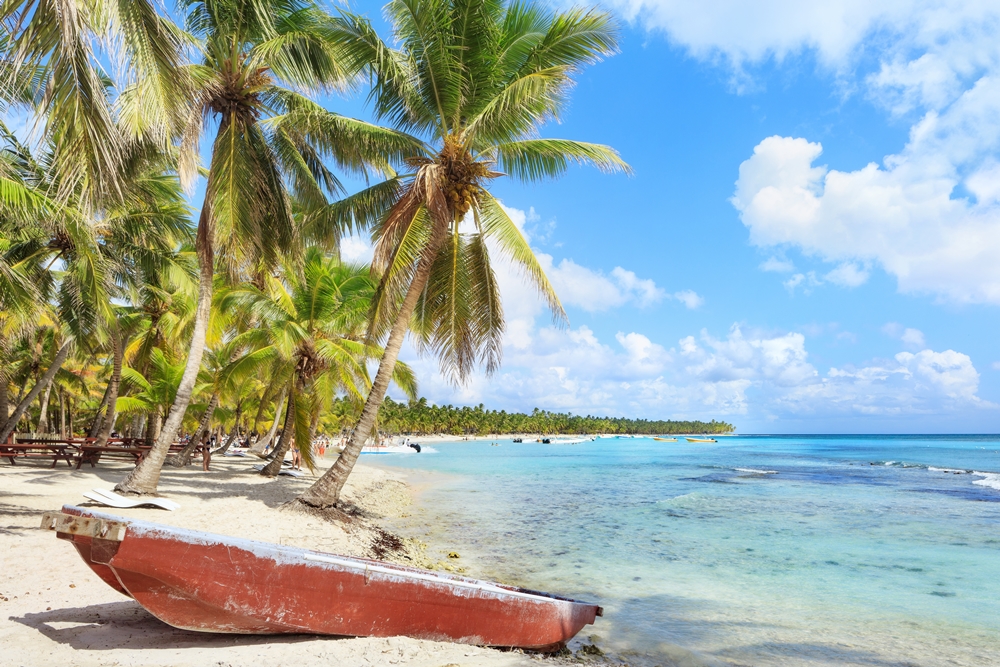
A part of the resort is Altos de Chavón which is a replica of a 16th century Mediterranean village. Come here to learn various crafts, from pottery to weaving (not by chance it is called the town of artists), explore cosy shops and galleries and refuel in restaurants and bars. Don’t miss the opportunity to visit Altos de Chavón at night and relish peaceful walks in a spectacular glow of lanterns. The centrepiece of the town is a 5,000-seat Greek style amphitheatre, which is a concert venue for Grammy-awarded performers.
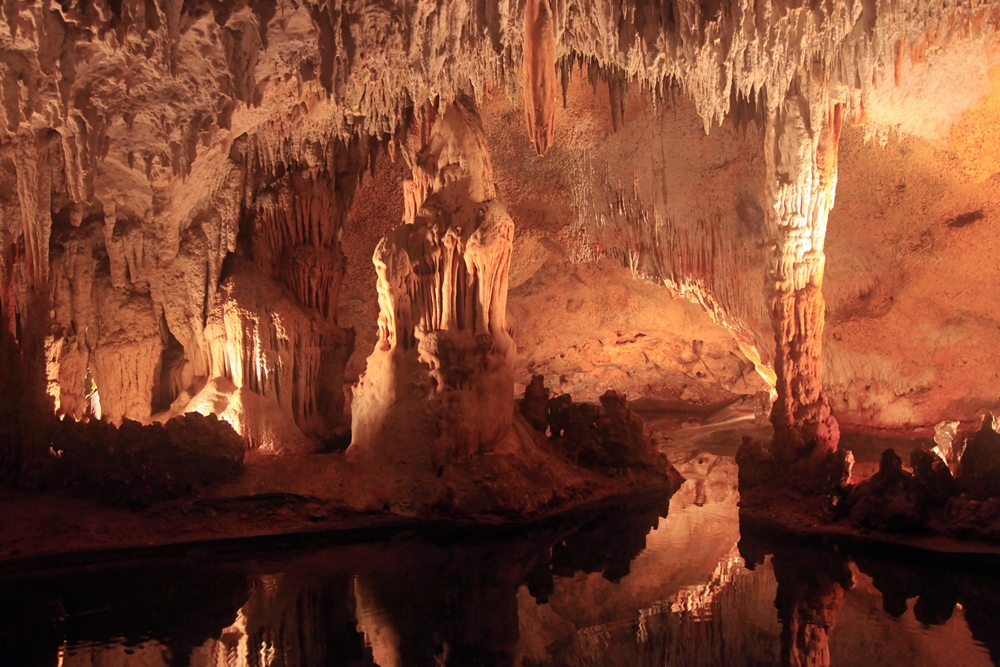
From La Romana take a boat tour to the pristine islands of Saona and Catalina, which are part of Cotubanamá National Park. Saona is famous for its photogenic beaches which are the most important turtle-nesting sites of the Dominican Republic. Catalina Island was discovered by Christopher Columbus, and for two centuries it remained a pirates’ shelter.
Twenty-one metres offshore you will see the only pirate ship of the Caribbean. Quedagh Merchant once belonged to William Kidd. Left in 1698, it was found only in 2007. And what is the most striking, the ship had been lying at a three metres depth for over three centuries, unnoticed even by numerous treasure hunters. She was found by a snorkeler who spotted cannons underwater. There were 26 of them and three anchors underneath.
The ship is believed to have sank in the zone of strong waves, so only heavy objects remained on the seafloor. Lighter ones were distributed by the currents. Today, Quedagh Merchant is an underwater museum, inhabited by corals and fish, and a great draw for divers and snorkelers. The park itself is a great place to encounter dolphins, manatees, rays and sea turtles. Numerous bird species, caves and freshwater springs await you onshore.
.jpg)
South, yet to explore
Moving to the west along the Caribbean coast, you will come to Las Calderas Peninsula with its Dunes of Baní, the only desert of the Caribbean region. Soft and smooth silken sands run to the sea. The highest ridge reaches 35 metres. Further west, in Azua province, you’ll be able to visit OcoaBay winery and its vineyards spread between the mountains and sea. Take your time and taste exquisite sun-drenched wines, have lunch, cooked by a two-Michelin-starred chef Matt Lightner, in the organic restaurant, swim and idle on the property’s own beach.
Deep in the southwest of the country, you’ll find Barahona, known as ‘a pearl of the South’. There’s no better way to see it than taking a car and driving the stunning Barahona Enriquillo Coastal Highway. To the left shimmers the Caribbean Sea, to the right tower mountain ranges of Barahona. Fishing villages and coastal towns are scattered along the way, creating a perfect road trip.
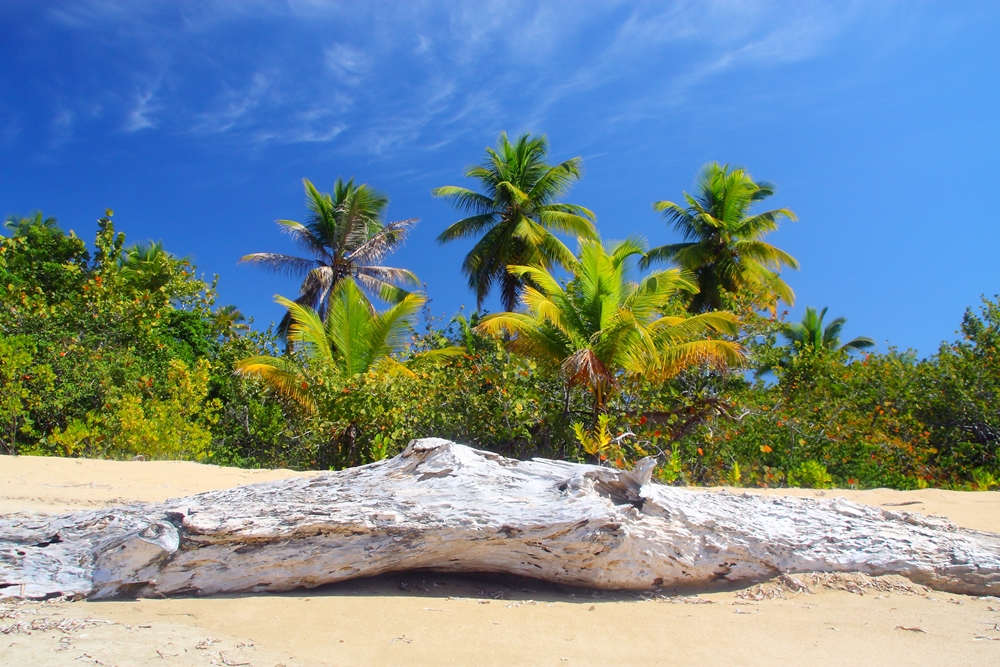
But Barahona attractions don’t stop there. Get ready to explore coffee plantations where the finest drink is born, add zest to your trip on a zipline, refresh in natural pools, hike dense forests with marked trails and Sierra de Bahoruco National Park teeming with birds and bursting with orchids of hundreds varieties. When you are there, visit hypersaline lake Enriquillo, which is the largest and the deepest in the Caribbean. It’s a great place for observing American crocodiles, flamingos and other bird species, as well as riding a horse up and down the pebble beach.
Westernmost, bordering Haiti, you will find Pedernales province with incredible locations for diving and Jaragua National Park, which can make you occupied for days. It is the biggest national park of the Caribbean and the first UNESCO Biosphere Reserve of the country. Its huge territory is covered with the sea and lagoons, dotted with isles and fringed with caves. The gem of the park is the magnificent 8-km beach Bahia de las Águilas, the most beautiful in the country. Protected by limestone cliffs, it gives refuge to manatees, green and leatherback sea turtles, loggerheads, iguanas and birds of 130 species. Another popular spot on the coast is Cabo Rojo. Boasting healthy coral reefs and technicolour marine life, it is excellent for swimming and diving.
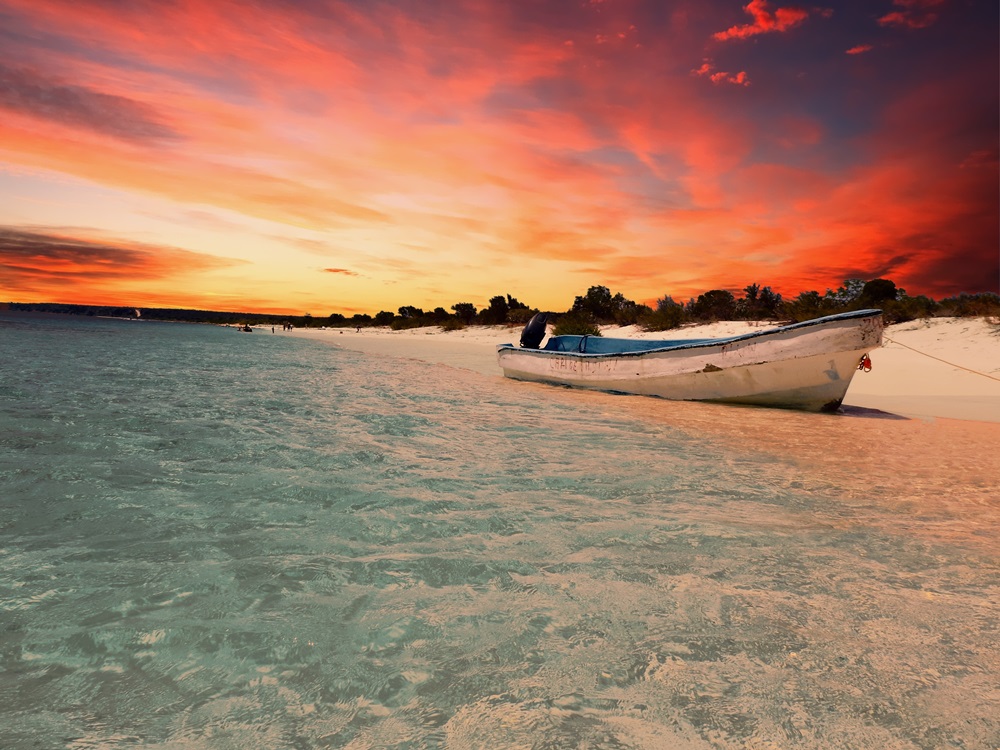
Hikers make the most of the way up to the Hoyo de Pelempito observatory with the stunning mixture of landscapes, from deserts to cloud forests, opening at the 1,300 m height.
Also in Pedernales, avid bird-watchers shouldn’t miss Laguna de Oviedo, where water is three times saltier than that of the sea. Royal and blue herons, egrets, pelicans, parrots, American flamingos and roseate spoonbills create a sight to behold.
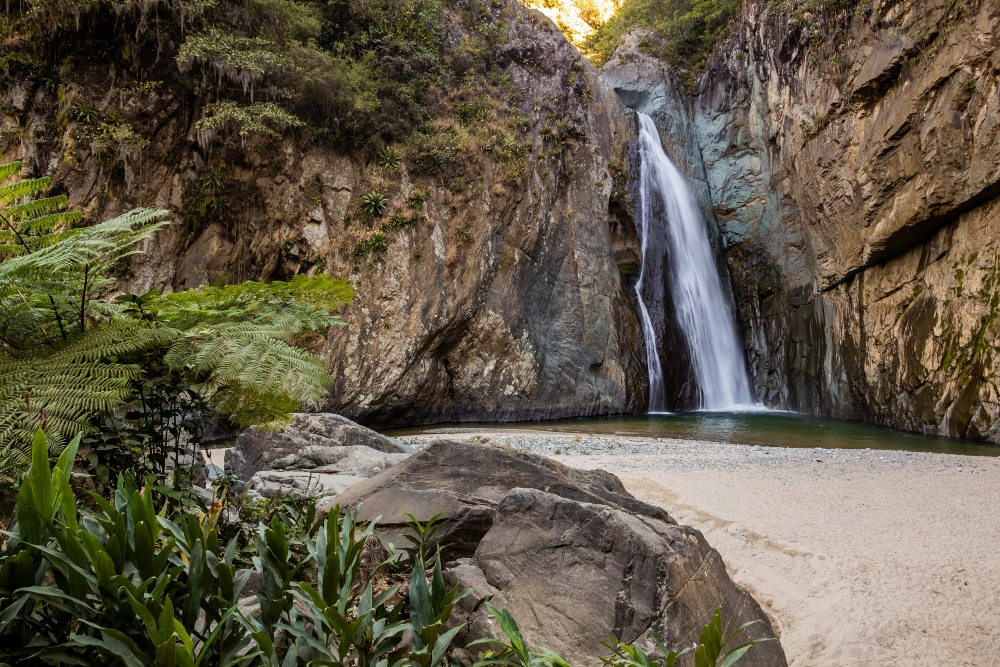
The Atlantic coast
The most famous resort of the country’s north is Puerto Plata. Founded in 1503 by Christofer Columbus, the city became the first European settlement in the New World. It’s here that tourism in the Dominican Republic was born in the 1970s. Two preferred holiday destinations of the region are Playa Dorada and Costa Dorada. The beaches of both are marked with the Blue Flags.
For water junkies, there’s an abundance of watersports and adventures. To keep your spirits high, the list of land activities includes golf, coffee and cacao plantation tours, merengue dance classes, retracing Columbus's steps, the exploration of colonial architecture and archeological sites. The only cable car in the Caribbean is located right here. Along with many walking trails it takes you to Mount Isabel de Torres with a statue of Christ Redeemer and botanical gardens.
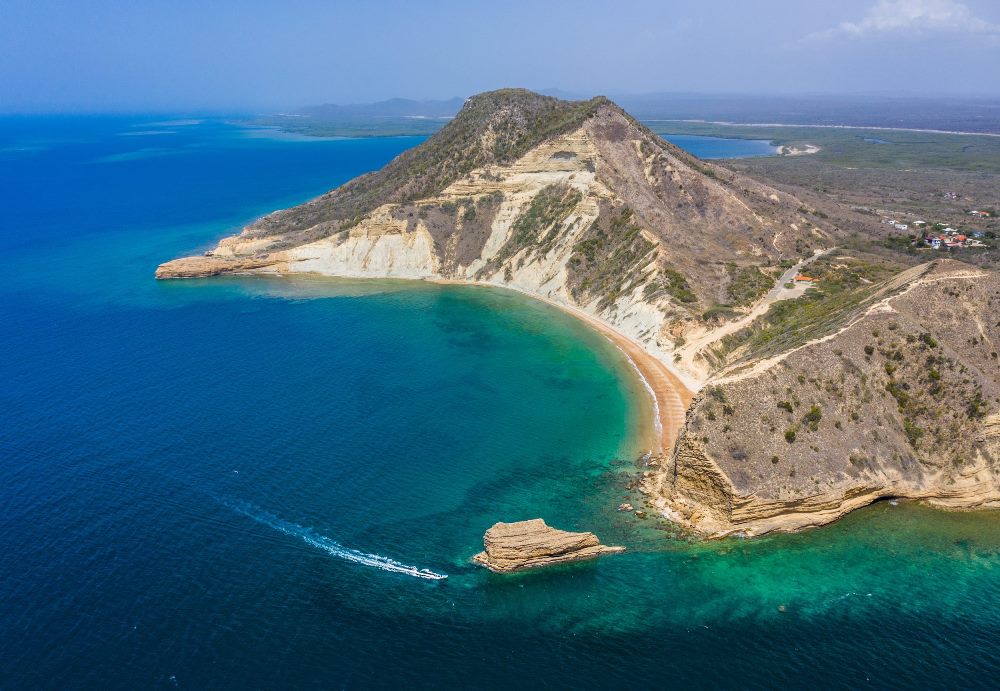
Fancy to catch a wave? Head to the town of Cabarete, also in Puerto Plata, which is considered the surfing capital of the Caribbean.
Adventure seekers should visit Damajagua Waterfalls with their 27 streams. For an extra thrill, jump or slide down the refreshing cascades and swim in the crystal clear natural pools. For a more relaxed mood, choose kayaking, paddle boarding and snorkelling.
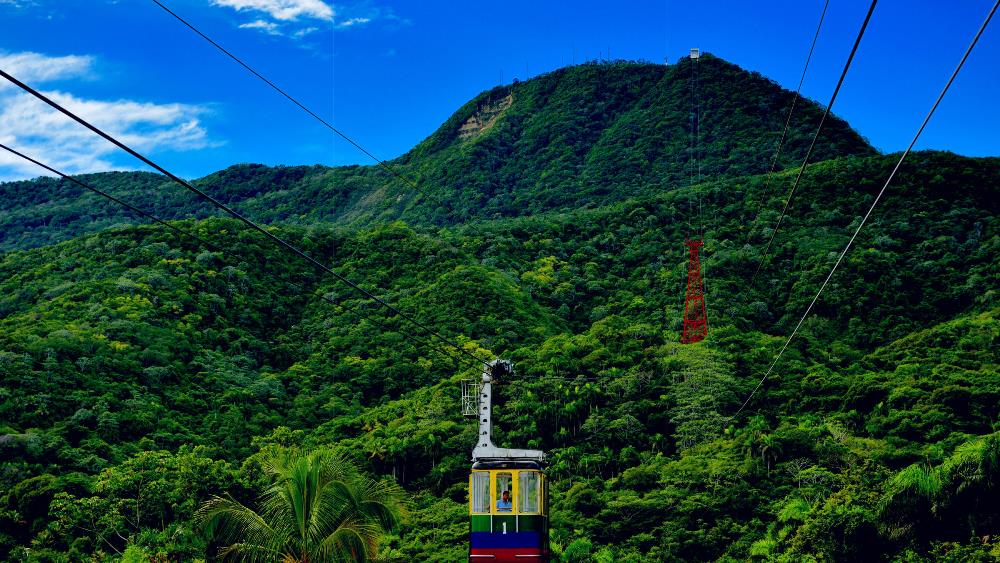
Again, if you are travelling along the Atlantic coast, pay a visit to the westernmost province of Montecristi. The toponymous town was founded by Spaniards in 1501. Later, the first trading port, viaduct and railway of the Dominican Republic were built and the country’s first network was installed. Montecristi has its own version of the ‘Table Mountain’, 242-metre-high mountain El Morro and a beach with the same name. Onshore, Montecristi is a great spot for kitesurfing, and its reef is the largest and healthiest around the country. Its waters hide over 450 shipwrecks dating back to Columbus’s days. And across the bay of Montecristi you’ll find Cayo Siete Hermanos with unreal snorkelling and diving sites.
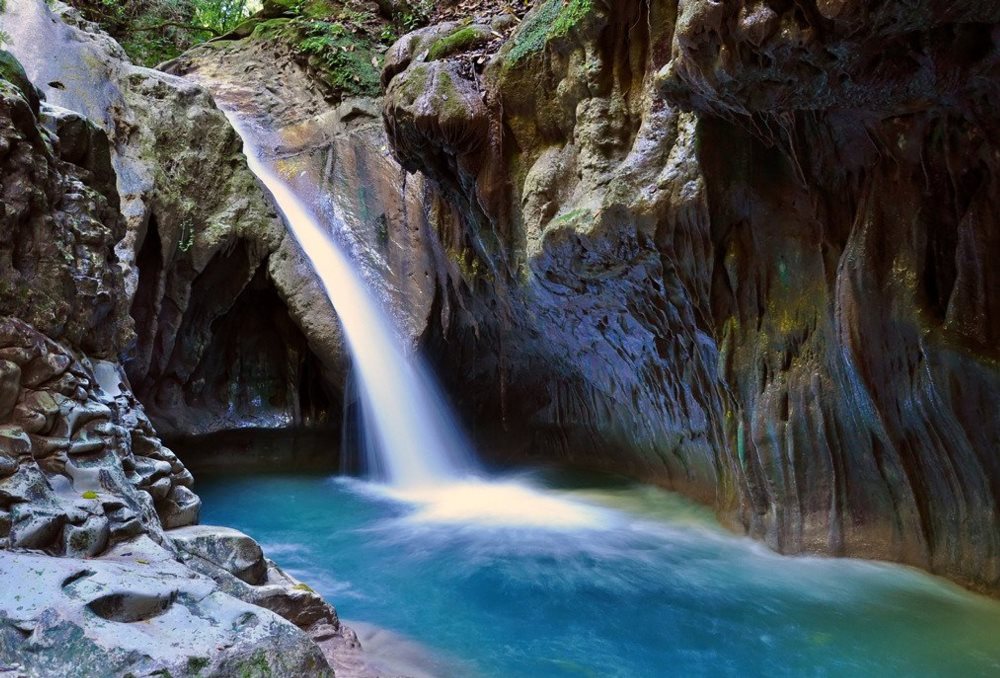
The Samaná Peninsula
This peninsula in the country’s northeast turns to a whale-watching hub from January till the end of March. Around 2,500 humpback whales visit Samaná waters to mate and deliver calves. These gentle giants gather in pods of up to 300 animals. You’ll see females with babies, hear males singing and witness their mating games.
Here, you can enjoy kitesurfing and the European chic atmosphere of Las Terrenas, explore the ‘Jurassic Park’ locations in the rainforest of Los Haitises National Park, famous for its rock formations jutting from the ocean. Next, hop on a horse and ride to El Limón waterfall.
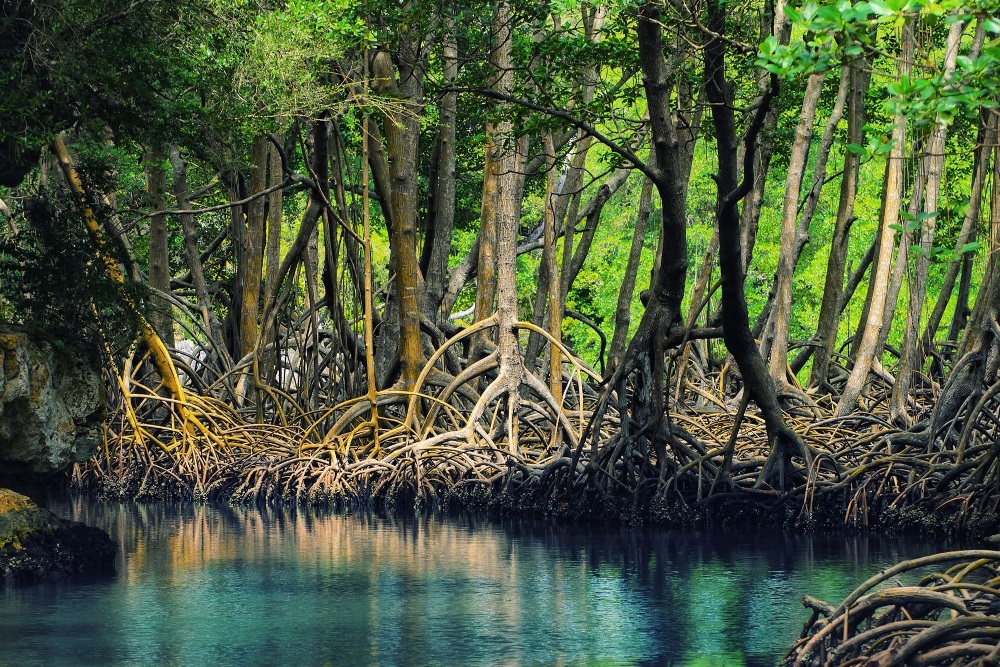
Punta Cana
The most famous Dominican destination, Punta Cana, is located on the junction of the Atlantic Ocean and the Caribbean Sea. It is a land of all-inclusive resorts, 11 Blue-Flag beaches, family water parks, ten golf courses and an impressive wellness scene, including Six Senses Spa.
Part of it is Cap Cana, one of the most exclusive Dominican resorts. It encompasses kilometres of impeccable beaches, Punta Espada Golf Course by Jack Nicklaus, tennis courts, stables and the equestrian academy. Cap Cana is home to Scape Park, where you can find adrenaline-packed adventures, and the biggest marina of the Caribbean region. Marina Cap Cana has 160 berths and can accommodate cruise ships. Among the luxurious hotels of the resort, the most prominent is Eden Roc Cap Cana with a private Blue-Flag beach, exclusive beach club and a comprehensive list of activities. Whether you want to make a helicopter tour or sunrise cruise, visit a cigar factory or master bachata, just let them know.
And don’t forget about the Carnival in Santo Domingo if you are visiting the country in February.


